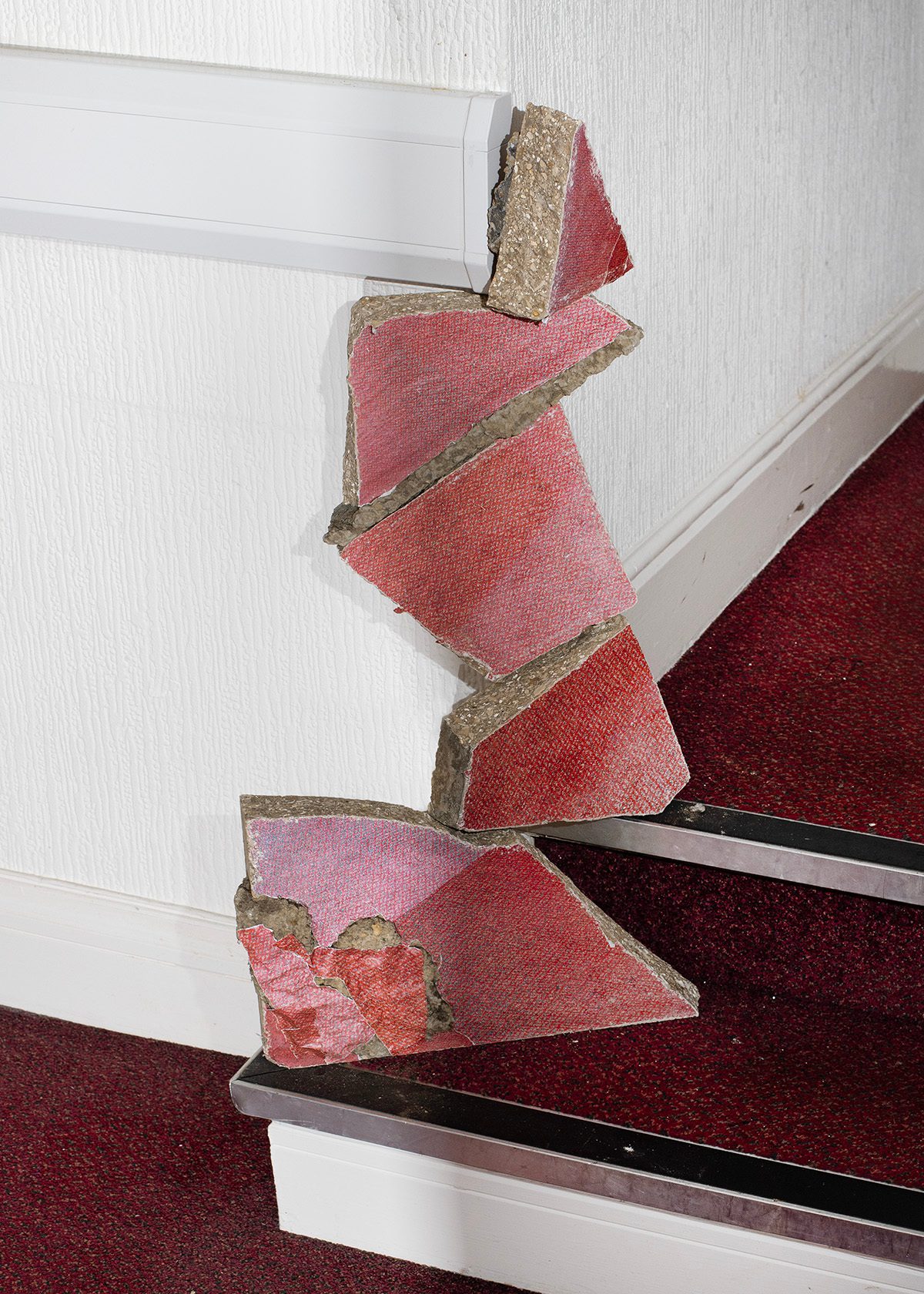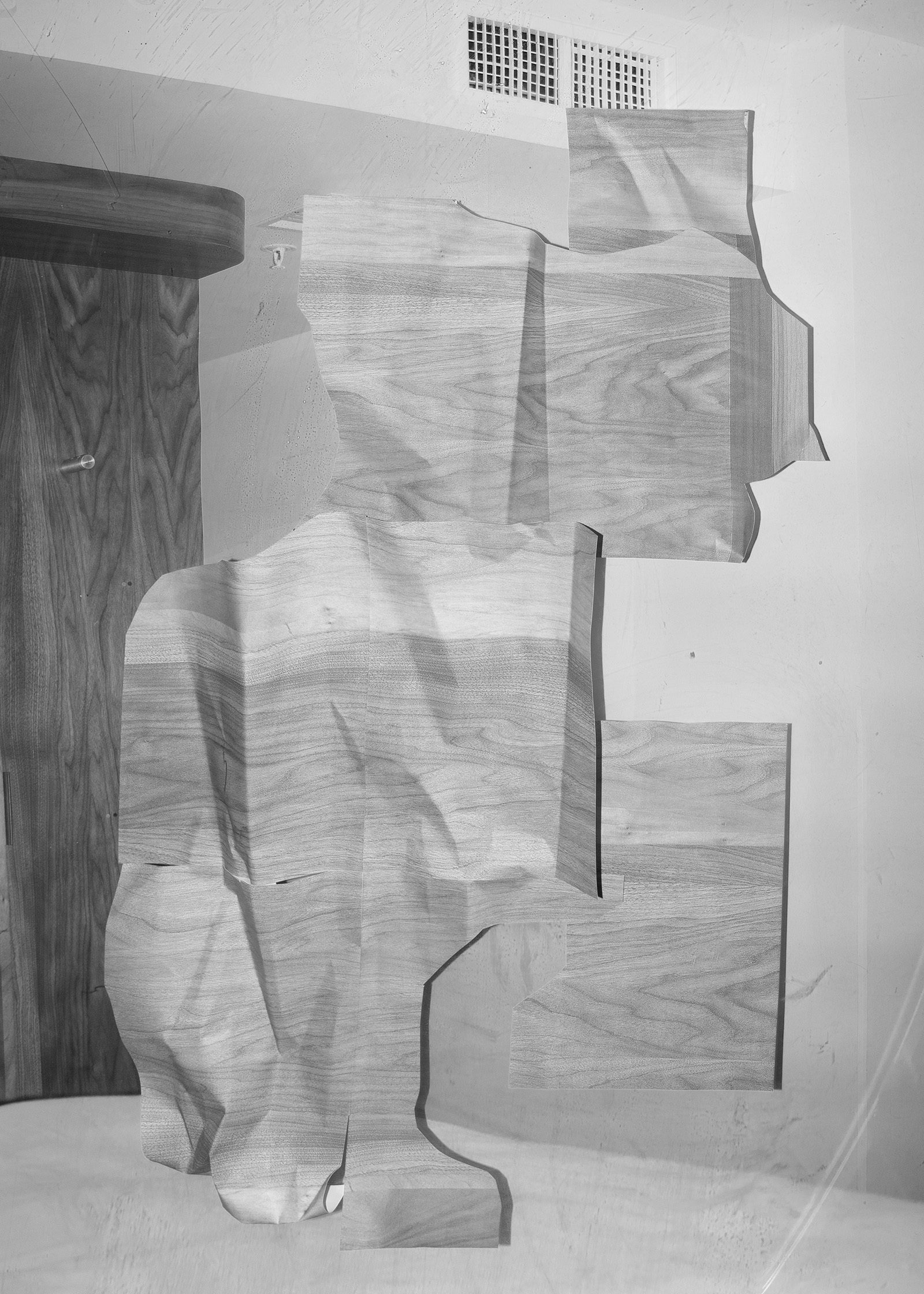Artist Spotlight: Sam Hutchinson
We catch up with Axis Fellowship cohort member, Sam Hutchinson, to chat about their work.

Spread from 'Terror of Complete faith', 2024, self-published
Tell us a bit about yourself and your practice, how would you describe the work that you do?
I'm an artist working predominantly with photography, using a mix of sculpture, installation and publishing to realise my work in a physical form. I'm currently concerned with the power of images, how they manipulate and obscure our ideas of reality in an age where we live somewhere between the real world and a curated version of it online. Particularly with how we as individuals define or present 'truth'. Everyone and everything seems to be able to reinvent or create representations of themselves using imagery and aesthetics, whether false or otherwise, and I like to study the role photographs play in this. I also work as the editor-in-chief for a magazine founded late last year called BOOT Mag, and work for Village, which is a bookshop and gallery in Leeds & Manchester.

I really like the way that you combine sculpture and photography to play with ideas of documentation. Could you tell us some more about this and how it relates to your ideas of 'truth'?
I would say that I'm less interested in the idea of 'documentation' with regards to sculpture, but more in trying to understand the possibilities of what a sculpture is composed of to be named as such. Initially I started working with found or disposable materials, things that could be gathered onsite, made into something physical to exist sculpturally as an image before being 'put back', destroyed, or re-contextualised into something new. I believe something that has at least once existed physically is still just as relevant as something that is kept forever. This also means I can work with an array of material that can constitute something 'sculptural', whether these objects are functional or otherwise.
The photograph as a final outcome makes us think more deeply about what we're given on face value and how the materials are transient in nature - are we looking at something we believe to be real? I remember a friend once discussing my work in a crit as being 'edited', assuming everything I made was digital because it existed purely as something that looked surreal within an image. I thought this was amusing because all of my images are actually analog. If it appears to be floating, or unbelievable as something physical, I assure you, there isn't manipulation. I've photographed it in a way in which what you're looking at is 'true’, or at least a truth that only I have seen the process for.

Despite the use of disposable materials and 'transient' processes within your sculptural practice, you also photograph other less 'transient' subject matter. Things like stone walls and barbed wire fencing, or signage for large corporations like Amazon. Could you tell us a little more about these?
These forms and figures stand as permanent, or impassible features of my work. I think having them alongside transient elements really adds more weight to the nature of each style of image. The concrete structures - linear and firm, defensive, and easily understandable as material objects - these become something very matter of fact. Physically and mentally we cannot pass through, or alter these forms easily, we feel useless and weak against them, they stand as very visceral, dominating barriers. They represent elements of culture that we have to weave within, rather than change using our own directions and movements. This is both physical and conceptual, using things like the Amazon logo as an idea of superiority, similar to how the concrete and barbed wire linear forms signal superiority with strength or restraint. These huge logos are things we recognise as being greater or more supreme than ourselves.

In a similar way to how you describe weaving within capitalist structures when talking about the content of your work, you’ve also mentioned that financial limitations play a role in your creative decisions and processes. Can you tell us more about that?
You have to be very successful or privileged to work at a pace in which you can afford financially to make, produce, and store physical art - even if you want to make things on a weekly basis. I personally make work everyday and feel quite an impulse to do so regardless of whether it is seen or not. The way I like to make physical work means I can adapt these same structures and forms into a multitude of objects that all start to have a dialogue with each other, asking us to question what our visceral reactions to these materials and objects are. How we understand something that we believe to be real but that doesn’t physically exist in the representation of it that we're given. This exists somewhat without having to succumb to the financial pressures of our modern world and the value people put into the time and space necessary to create objects.
Even funnier, how many people can talk about certain sculptors' works, the material aspects of them, the installations, without having ever seen them in person? I know I have so much work saved by artists I've found online that only exists to me as digital images on a screen. I would tell someone I loved an artist's work without having ever seen it in person. A lot of art looks better on instagram than when you see it in person, and I think people now inevitably try to make artwork that looks 'instagrammable', where the documentation of the work seems to be more important than the physical thing itself.

Alongside exhibiting your artwork in galleries, you also use the format of the zine to share a lot of your work. I wondered whether you could tell us how the use of this format fits into your practice and the immediacy with which you work?
I think zines work best when they’re used as a tactile form for a somewhat realised body of work. I think when zines are too refined or cohesive they lose me a bit. For example, a lot of my research work goes into zines. I've been using the umbrella title 'Tomb Stone Happy Slap' to hold these - I've made three so far, 'Amazon is Burning' (2022), 'Uninvited Guest' (2023) and 'Terror of Complete Faith' (2024). These are all made up of appropriated images I've found that help me understand elements of my research and allow me to study these images further. Why have they been used in the way they have, and for what purpose? What is the function of photographs and images shared outside of an art based context, and what happens when we view them within this context?
I also recently published a zine with Spectrum, a concept store in Milan, that was titled 'Whispers in Latin' and was a mixture of works in progress, unused photographs, and research images. In some ways the work isn't visually cohesive, however, I find it especially interesting that these somewhat visually unrelated subjects can be held together through a shared rationale or concept. I've always tried to avoid having an aesthetic that defines my work as I’m more interested in the concepts than the final visuals. I feel as though a lot of artists fall into the trap of being stuck within certain aesthetics because they’ve had success with them - whether financially or through Instagram likes.
For me, a zine is a perfect outlet to experiment with curation and ideas, and it’s also more accessible to buy, and accessible to produce. I can't afford to buy most artwork, even from friends at the price it's 'supposed' to cost, however, I can buy zines. There's something really special and anti-establishment about that that doesn't exist in the art world. Photography also really suits being printed, and a zine can direct the viewer into a more tangible context for the artwork to be experienced.

Finally, for anyone thinking of applying to this year's Fellowship, can you tell them how it has been useful to your practice?
The fellowship has really supported me this year, at a time when I really needed some critical engagement with new artists. It allowed me to have regular sessions that have been massively beneficial to me releasing elements of my current work, as well as provided some much needed financial support to allow the development of new projects and to help me experiment. I would recommend it to anyone interested in meeting a cohort of artists to talk about work, who enjoys having a peer group and network in which you can share ideas freely and supportively. Thanks so much to Axis for this opportunity, and to our perfect little group!
Artists
Tags, Topics, Artforms, Themes and Contexts, Formats
Share this article
Helping Artists Keep Going
Axis is an artist-led charity supporting contemporary visual artists with resources, connection, and visibility.


